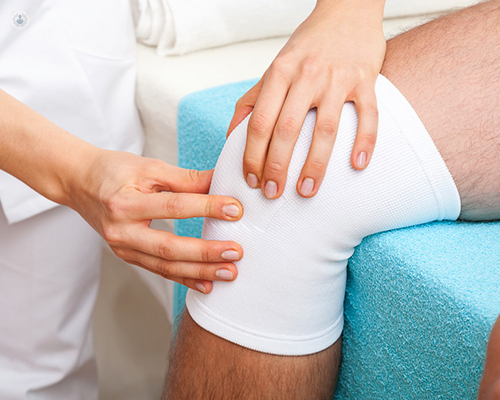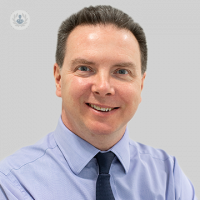How is knee arthroscopy performed?
Autore:Knee arthroscopy is the technique which people commonly refer to as keyhole surgery. Through two tiny little incisions, surgeons are able to get inside the knee joint with the camera and tools to look around the knee, producing a fantastic view of all the tissues. Problems can be identified and dealt with surgically, all through minimally invasive, low-trauma techniques.
Leading consultant orthopaedic surgeon, Mr Andrew John Davies, talks through the knee arthroscopy procedure.

How is knee arthroscopy performed?
Knee arthroscopy is performed in a very careful, standardised fashion. Initially, the patient is usually given general anaesthetic, which is administered in the spine as an epidural. In some cases, local anesthesia is used, but this is rare.
Before the procedure, the patient’s skin is painted with antibacterial solution and cleaned. The area is dressed and wrapped, and often a tourniquet is used on the leg.
An arthroscope, which includes a camera and medical tools, is introduced through two tiny holes in the front of the knee. The knee is gently inflated with a clear saline solution that enables the surgeon to look around the knee with a high-definition camera, producing a fantastic view as if you're watching on your television.
At that point, the problem can be identified and dealt with surgically. Depending on the level of invasiveness of the procedure, most cases only require two tiny incisions.
At the end of the procedure, the knee is washed out very carefully, and any damaged debris or tissue is removed. The wounds are then dressed with simple paper strips or simple stitches.
The knee is injected with a local anaesthetic to make sure patients are pain-free.
What is the recovery time for knee arthroscopic surgery?
The vast majority of knee arthroscopy patients can walk out of hospital within a few hours of admission and very few of them actually even require crutches. Patients can usually be mobilised, allowing them to get back to activity as quickly as possible.
The recovery from the arthroscopic knee surgery very much depends upon the procedure that's been performed.
For example, a patient having a torn cartilage trimmed can expect to be back at work within two to three days. They would have to ice the knee, perform physiotherapy and can then expect to be back to full activity level, including sports, in about six to eight weeks.
For the more complex surgeries such as ligament reconstruction, then the recovery is a lot longer. In these cases, patients can usually expect to come off their crutches after around two to three weeks. At six weeks they would usually be walking normally, after 12 weeks most patients would be at the stage where they could do some light jogging, and at 24 weeks they start twisting turning and jumping. However, complete recovery actually takes nine months.
If you would like to make an appointment with a knee arthroscopy specialist, you can do so via Mr Andrew John Davies' Top Doctors profile.


